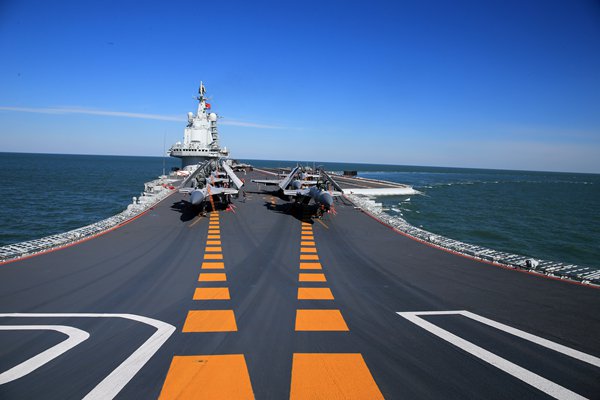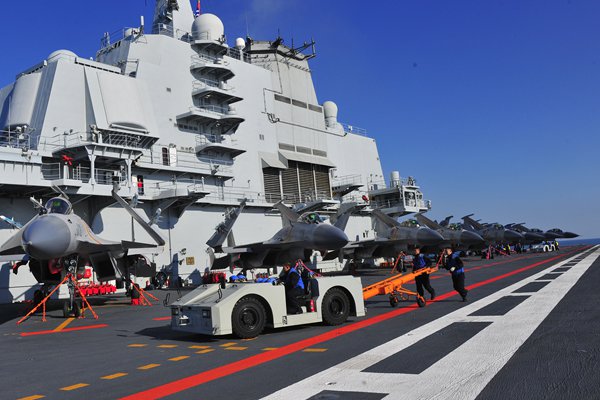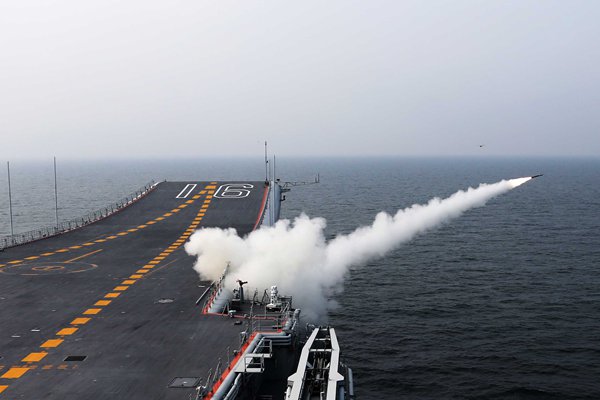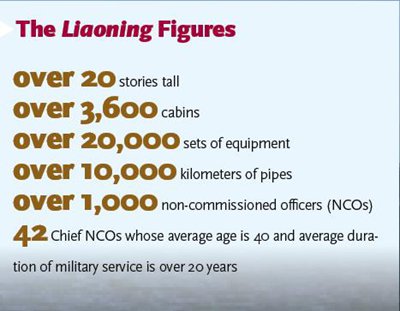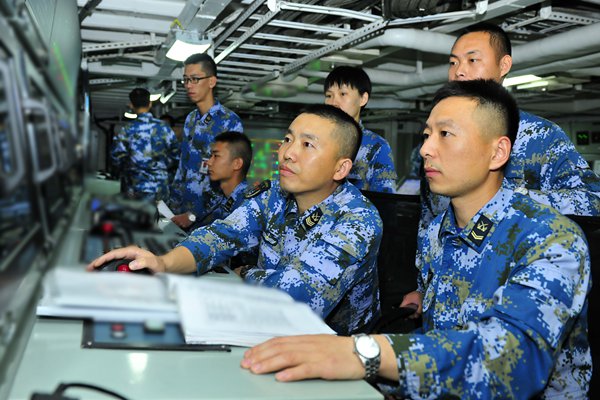Hendrik_2000
Lieutenant General
Well another milestone is reached again . Liaoning is unofficially declared operational.
For those of us who watch the Liaoning development, Bltizo is the one who predict that she will be operational 5 years after commission congrat. It is fast for a country that never operate carrier. I guess the recent flurry of photos presage the declaration. Here it is
China says aircraft carrier now ready for combat
Associated Press 6 hours ago

BEIJING (AP) — China's first aircraft carrier is now ready to engage in combat, marking a milestone for a navy that has invested heavily in its ability to project power far from China's shores.
The Liaoning's political commissar said in an interview with Tuesday's Global Times newspaper that his ship is "constantly prepared to fight against enemies," signaling a change from its past status as a platform for testing and training.
Senior Captain Li Dongyou's comments appear to indicate that the ship has taken on its full aviation complement. Purchased as an incomplete hull from Ukraine more than a decade ago, it was commissioned in 2013.
China hasn't described specifically how it intends to use the Liaoning, but it is seen as helping reinforce China's increasingly assertive claims in the South China Sea in the face of challenges from the U.S. Navy and others.
The Liaoning is also seen as a training platform for officers and sailors who will serve on China's rapidly expanding fleet. China is currently building its second, fully "homegrown" aircraft carrier.
Li said the Liaoning's combat capabilities still lag behind U.S. carriers, but its training and maintenance operations have been praised by senior Pentagon officials who have visited during military exchanges.
More than 1,000 non-commissioned officers serve aboard the Liaoning, Li sai
For those of us who watch the Liaoning development, Bltizo is the one who predict that she will be operational 5 years after commission congrat. It is fast for a country that never operate carrier. I guess the recent flurry of photos presage the declaration. Here it is
China says aircraft carrier now ready for combat
Associated Press 6 hours ago

BEIJING (AP) — China's first aircraft carrier is now ready to engage in combat, marking a milestone for a navy that has invested heavily in its ability to project power far from China's shores.
The Liaoning's political commissar said in an interview with Tuesday's Global Times newspaper that his ship is "constantly prepared to fight against enemies," signaling a change from its past status as a platform for testing and training.
Senior Captain Li Dongyou's comments appear to indicate that the ship has taken on its full aviation complement. Purchased as an incomplete hull from Ukraine more than a decade ago, it was commissioned in 2013.
China hasn't described specifically how it intends to use the Liaoning, but it is seen as helping reinforce China's increasingly assertive claims in the South China Sea in the face of challenges from the U.S. Navy and others.
The Liaoning is also seen as a training platform for officers and sailors who will serve on China's rapidly expanding fleet. China is currently building its second, fully "homegrown" aircraft carrier.
Li said the Liaoning's combat capabilities still lag behind U.S. carriers, but its training and maintenance operations have been praised by senior Pentagon officials who have visited during military exchanges.
More than 1,000 non-commissioned officers serve aboard the Liaoning, Li sai
Last edited:

